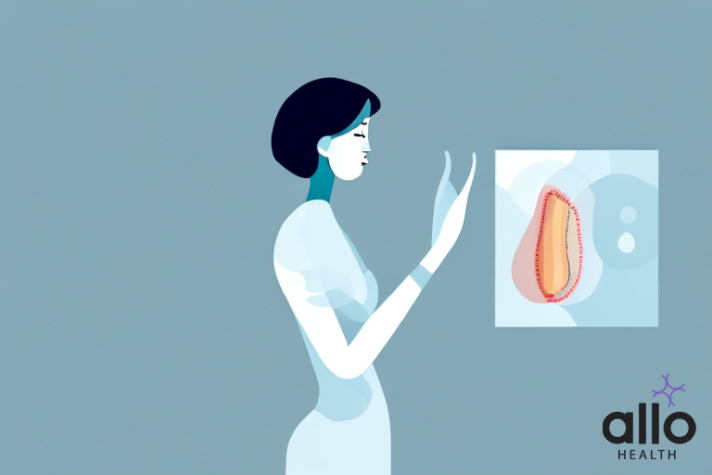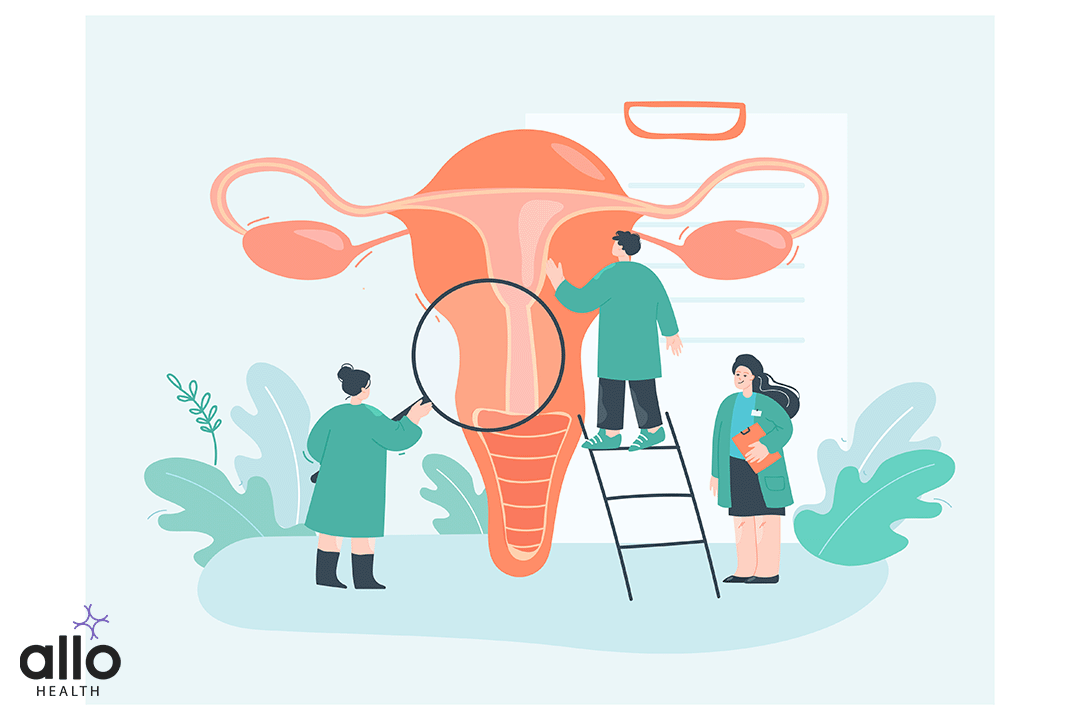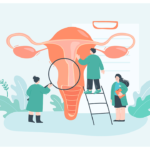Vaginismus Finger Insertion Exercises: A Guide to Overcoming Painful Intercourse

Allo Health is dedicated to personalized well-being, offering support and trusted information tailored to individual health goals. The platform emphasizes human-generated content, led by a distinguished medical team of experts, including physicians and sexual health specialists. Their commitment to credibility involves rigorous fact-checking, authoritative research, and continuous updates to ensure accurate, up-to-date information. Allo Health's unique approach goes beyond conventional platforms, providing expert-led insights and a continuous commitment to excellence, with user feedback playing a crucial role in shaping the platform's authoritative voice.

Dr Sanina Mansoor holds MBBS degree from Yenepoya university,Mangalore.She has 8 years of experience working as a medical officer at various health centres and medical colleges.
Why This Was Upated?
Our experts continually monitor the health and wellness space, and we update our articles when new information became available.
Updated on 17 January, 2024
- Article was updated as part of our commitment to diversity, equity, and inclusion.

"The following blog article provides general information and insights on various topics. However, it is important to note that the information presented is not intended as professional advice in any specific field or area. The content of this blog is for general educational and informational purposes only.
Book consultation
The content should not be interpreted as endorsement, recommendation, or guarantee of any product, service, or information mentioned. Readers are solely responsible for the decisions and actions they take based on the information provided in this blog. It is essential to exercise individual judgment, critical thinking, and personal responsibility when applying or implementing any information or suggestions discussed in the blog."
If you have vaginismus, you may feel like you’re alone in your struggle with painful intercourse. But you’re not alone. This is a common condition that affects many women. Fortunately, there is hope. You can overcome vaginismus with finger insertion exercises, and in this article, we’ll guide you through the process.
What Is Vaginismus?
Vaginismus is a medical condition that affects individuals assigned female at birth, leading to involuntary muscle spasms or contractions of the pelvic floor muscles. These spasms can make vaginal penetration painful or even impossible. Vaginismus is often considered a sexual dysfunction disorder and can have significant emotional and psychological implications for those affected.
Here are some key points about vaginismus:
- Involuntary Muscle Spasms: The primary characteristic of vaginismus is the involuntary contraction of the muscles around the vagina, specifically the pelvic floor muscles. These contractions make penetration, whether attempted during sexual intercourse, gynecological examinations, or even the insertion of tampons, difficult or impossible.
- Physical and Emotional Components: Vaginismus involves both physical and emotional components. The physical aspect is the involuntary muscle spasm, while the emotional component often includes fear, anxiety, or anticipation of pain associated with vaginal penetration. The emotional factors can exacerbate the physical symptoms and create a cycle of avoidance and anxiety.
- Primary and Secondary Vaginismus: Vaginismus is categorized into two main types – primary and secondary. Primary vaginismus occurs when a person has never been able to have pain-free vaginal penetration. Secondary vaginismus refers to cases where an individual develops symptoms later in life after a period of pain-free intercourse.
- Causes: The exact cause of vaginismus can vary. It may be associated with psychological factors, such as past traumatic experiences, anxiety, fear of pain, or relationship concerns. Physical factors, such as infections, injury, or medical conditions, can also contribute to vaginismus.
- Treatment: Treatment for vaginismus is often multidisciplinary, involving both physical and psychological approaches. Physical therapy, which includes pelvic floor muscle relaxation exercises, may be prescribed. Psychological counseling or therapy, such as cognitive-behavioral therapy (CBT), may also be beneficial to address any underlying emotional factors.
- Communication and Support: Open communication between partners is crucial when dealing with vaginismus. Support from a partner, along with patience and understanding, can play a significant role in the treatment process. Couples therapy may be recommended in some cases.
It’s important for individuals experiencing symptoms of vaginismus to seek professional help, such as from a gynecologist, pelvic floor physical therapist, or a mental health professional specializing in sexual health. The combination of physical and psychological interventions can often lead to successful outcomes and improved quality of life for those affected by vaginismus.
Causes Of Vaginismus
Vaginismus is a complex condition, and its causes can be both physical and psychological. Understanding the factors contributing to vaginismus is essential for effective treatment. Here are the causes of vaginismus in detail:
- Psychological Factors:
- Fear and Anxiety: One of the primary psychological factors contributing to vaginismus is fear and anxiety related to vaginal penetration. Negative past experiences, such as trauma, abuse, or a history of painful intercourse, can create psychological barriers.
- Sexual Trauma: Individuals who have experienced sexual trauma or abuse may develop vaginismus as a protective response. The body’s natural defense mechanism can lead to involuntary muscle spasms, making penetration difficult or impossible.
- Negative Beliefs and Attitudes: Cultural or religious beliefs, societal taboos, or negative attitudes towards sex can contribute to anxiety and fear, exacerbating vaginismus symptoms.
- Relationship concerns: Concerns in intimate relationships, communication concerns with a partner, or a lack of emotional intimacy can contribute to vaginismus. Relationship stressors may manifest physically in the form of pelvic floor muscle tension.
- Physical Factors:
- Infections: Infections affecting the genital area, such as yeast infections or urinary tract infections, can cause discomfort and pain, leading to pelvic floor muscle tension and vaginismus.
- Menopause and Hormonal Changes: Decreased estrogen levels during menopause can result in vaginal dryness and thinning of the vaginal walls, making penetration painful and potentially contributing to vaginismus.
- Medical Procedures or Surgeries: Previous medical interventions, such as pelvic surgeries or radiation therapy, may lead to physical changes or scarring that contribute to vaginismus.
- Anatomical concerns: Conditions affecting the anatomy of the genital area, such as congenital abnormalities or pelvic floor dysfunction, can contribute to vaginismus.
- Sexual Pain Disorders:
- Dyspareunia: Vaginismus can coexist with other sexual pain disorders, such as dyspareunia, where individuals experience persistent pain during sexual intercourse.
- Unrealistic Expectations: Unrealistic expectations about sex, often influenced by societal norms or media portrayals, can create performance pressure, anxiety, and fear, contributing to vaginismus.
- Lack of Sex Education: Inadequate sex education or misinformation about sexual anatomy and functioning may contribute to anxiety and fear surrounding sexual activities, potentially leading to vaginismus.

It’s important to note that vaginismus is a highly individualized condition, and its causes can vary from person to person. Often, a combination of physical and psychological factors contributes to the development and persistence of vaginismus. Successful treatment typically involves addressing both the physical and emotional aspects of the condition through a multidisciplinary approach. Seeking guidance from healthcare professionals specializing in sexual health is crucial for a thorough assessment and personalized treatment plan.
Medical Treatments For Vaginismus
Treating vaginismus typically involves a comprehensive and multidisciplinary approach that addresses both the physical and psychological aspects of the condition. The specific treatment plan may vary depending on the individual’s circumstances, the severity of symptoms, and any underlying causes. Here is a detailed overview of the various components involved in treating vaginismus:
- Medical Evaluation: Before initiating treatment, it’s important to undergo a thorough medical evaluation to rule out any underlying physical causes for the symptoms. This may involve a gynecological examination and relevant tests to check for infections, anatomical concerns, or other medical conditions.
- Pelvic Floor Physical Therapy:
- Pelvic floor physical therapy is a key component of treating vaginismus. This therapy is conducted by a specialized physical therapist who helps individuals learn to control and relax their pelvic floor muscles. Techniques may include:
- Pelvic floor relaxation exercises: These exercises focus on consciously relaxing and controlling the pelvic floor muscles.
- Biofeedback: This technique provides individuals with visual or auditory feedback about their muscle activity, helping them gain better control over muscle relaxation.
- Dilator therapy: Gradual use of graduated dilators of increasing sizes can help desensitize and stretch the vaginal muscles.
- Pelvic floor physical therapy is a key component of treating vaginismus. This therapy is conducted by a specialized physical therapist who helps individuals learn to control and relax their pelvic floor muscles. Techniques may include:
- Education and Counseling: Education about the anatomy and function of the pelvic floor, as well as information about sexual health, can help demystify the condition and reduce anxiety. Counseling, including cognitive-behavioral therapy (CBT), may be recommended to address any psychological factors contributing to vaginismus.
- Gradual Exposure and Desensitization: Gradual exposure to vaginal penetration is a crucial aspect of treatment. This may involve the use of dilators or other objects of increasing size, starting with the smallest size and progressing as comfort allows. This process helps desensitize the individual to the sensation of penetration.
- Behavioral Techniques: Relaxation techniques, such as deep breathing and progressive muscle relaxation, can help individuals manage anxiety and tension associated with vaginal penetration. These techniques are often integrated into therapy sessions and can be practiced at home.
- Medication: In some cases, healthcare providers may prescribe medications to address specific symptoms or contributing factors. For example, topical anesthetics may be used to temporarily reduce pain during attempts at penetration.
- Couples Therapy: Involving a partner in the treatment process is crucial for providing support and understanding. Couples therapy can help improve communication, foster empathy, and address any relationship concerns that may be contributing to the condition.
- Follow-Up and Support: Regular follow-up appointments with healthcare providers and therapists are important to monitor progress and make necessary adjustments to the treatment plan. Ongoing support, both from professionals and from a supportive social network, is essential.
It’s important to note that the success of treatment for vaginismus varies from person to person. Patience, consistency, and a supportive environment are key elements in achieving positive outcomes. Individuals experiencing symptoms of vaginismus should consult with healthcare professionals who specialize in sexual health to determine the most appropriate and effective treatment plan for their specific situation.
Vaginismus Finger Insertion Exercises
Finger insertion exercises are a component of pelvic floor physical therapy designed to help individuals with vaginismus gradually overcome the involuntary muscle spasms associated with the condition. These exercises aim to desensitize and train the pelvic floor muscles to allow for comfortable penetration. It’s important to approach these exercises with patience and to progress at a pace that feels comfortable for the individual. Here is a detailed guide on finger insertion exercises for vaginismus:
Preparation:
- Relaxation Techniques: Begin with relaxation techniques such as deep breathing or progressive muscle relaxation to help reduce anxiety and tension.
- Clean Hands: Wash your hands thoroughly to ensure cleanliness and reduce the risk of infection.
- Use Lubrication: Apply a water-based lubricant to your fingers to ease the process of insertion.
Step-by-Step Guide:
- External Massage: Begin by gently massaging the external genital area, including the vulva and perineum, to increase awareness and relaxation.
- Gradual Touch: Gradually introduce touch around the vaginal opening with one finger. Start with light, non-intrusive contact to help the muscles become accustomed to touch.
- External Entry: Once comfortable, progress to gently inserting the fingertip into the vaginal opening without pushing or applying pressure. Focus on maintaining relaxation.
- Finger Circles: Perform gentle circular motions with the inserted finger while monitoring muscle tension. This can help the muscles adapt to movement.
- In-Out Movements: Begin by slow in-and-out movements with the finger, maintaining a focus on relaxation. If there is any discomfort, pause and practice relaxation techniques.
- Gradual Depth: Gradually increase the depth of insertion as comfort allows. Pay attention to any areas of tension and work on releasing them through relaxation techniques.
- Two-Finger Approach: Once comfortable with one finger, consider using two fingers for gentle insertion, again progressing at a pace that feels manageable.
- Introduce Movement: Introduce subtle movements, such as rocking or gentle thrusting, to further train the pelvic floor muscles to accommodate motion.
- Experiment with Different Positions: Explore different positions that may affect muscle tension. Some individuals find it helpful to try insertion exercises in positions like lying down, sitting, or standing.
- Consistent Practice: Consistency is key. Practice the exercises regularly, gradually increasing the duration and intensity. Set aside dedicated time for these exercises to build a routine.
Tips:
- Go at Your Own Pace: Progress should be based on your comfort level. If at any point there is pain or discomfort, stop and practice relaxation techniques.
- Communication: If you’re working with a partner, communicate openly about your experiences, feelings, and any concerns. Partner support can be beneficial during this process.
- Professional Guidance: Consider seeking guidance from a pelvic floor physical therapist or a healthcare professional specializing in sexual health. They can provide personalized advice and monitor your progress.
It’s crucial to approach finger insertion exercises for vaginismus with patience and a positive mindset. If difficulties persist or worsen, it’s advisable to consult with a healthcare professional for further assessment and guidance.
Most Asked Questions
-
How often must I practice vaginismus finger insertion sports?
Practice those sporting activities often, aiming for as a minimum 3 to 4 instances in keeping with week. Consistency is key to gradually train and relax the pelvic floor muscular tissues. Begin with shorter sessions and step by step boom the length as you turn out to be extra comfortable.
-
Can I use any lubricant for those exercises?
Yes, it is essential to use a water-based totally lubricant to facilitate clean and comfortable finger insertion. Lubrication reduces friction, making the manner more exciting and supporting to reduce any capacity pain.
-
What if I experience ache in the course of finger insertion physical games?
If you stumble upon pain or discomfort, pause without delay and exercise rest techniques. It's essential to go at your very own tempo, and if the pain persists, remember searching for steering from a healthcare professional that specialize in sexual fitness.
-
Are there particular positions that paintings better for these sporting activities?
Experiment with one-of-a-kind positions to find what works excellent for you. Some people may additionally locate mendacity down extra snug, even as others decide on sitting or status. Explore various positions to identify the one that minimizes muscle tension.
-
Can these physical activities be achieved with a companion?
Yes, involving a supportive associate may be useful. Communicate openly approximately your reports, emotions, and any concerns. Partners can offer emotional aid, and in a few cases, they will help with the exercises under the steering of a healthcare expert.






































